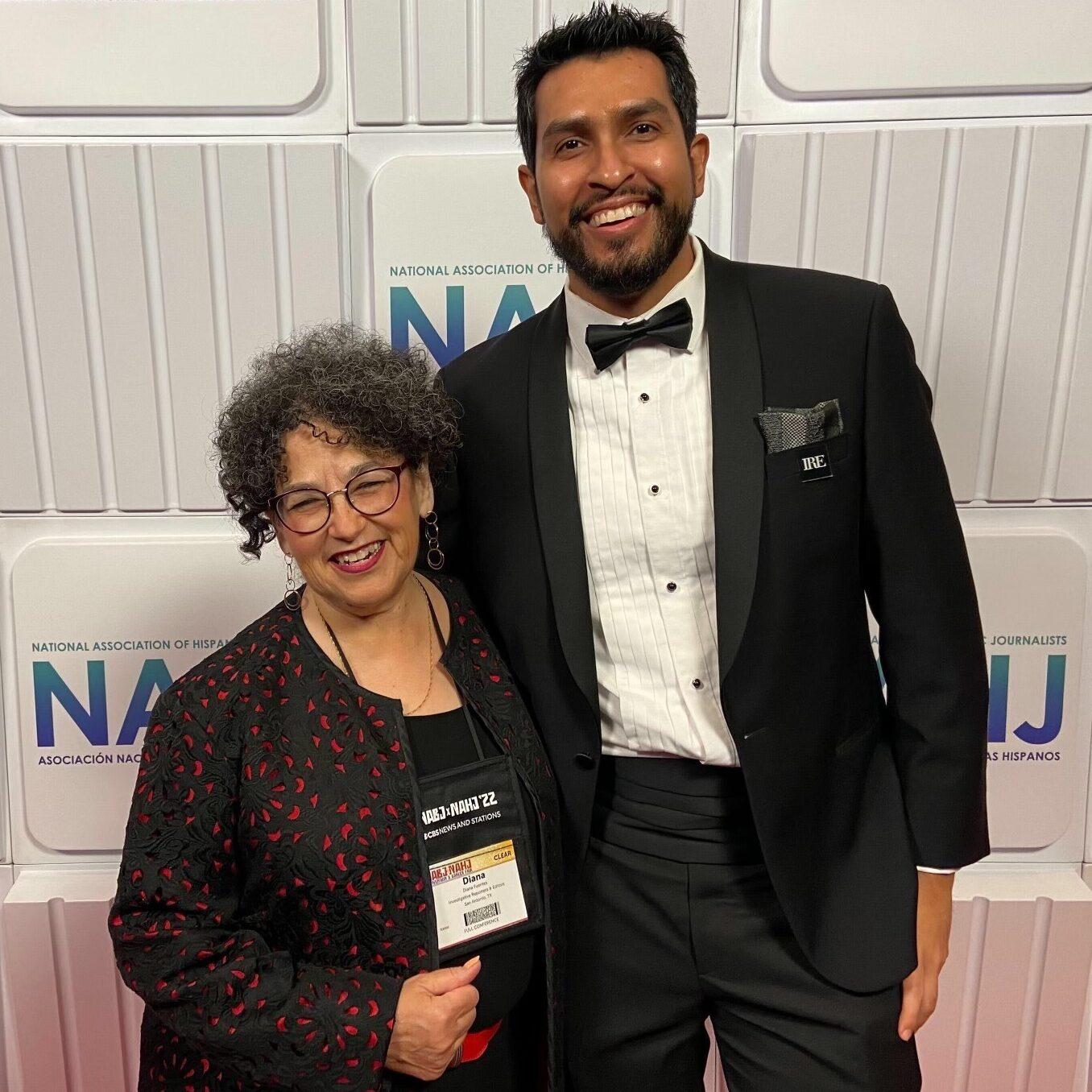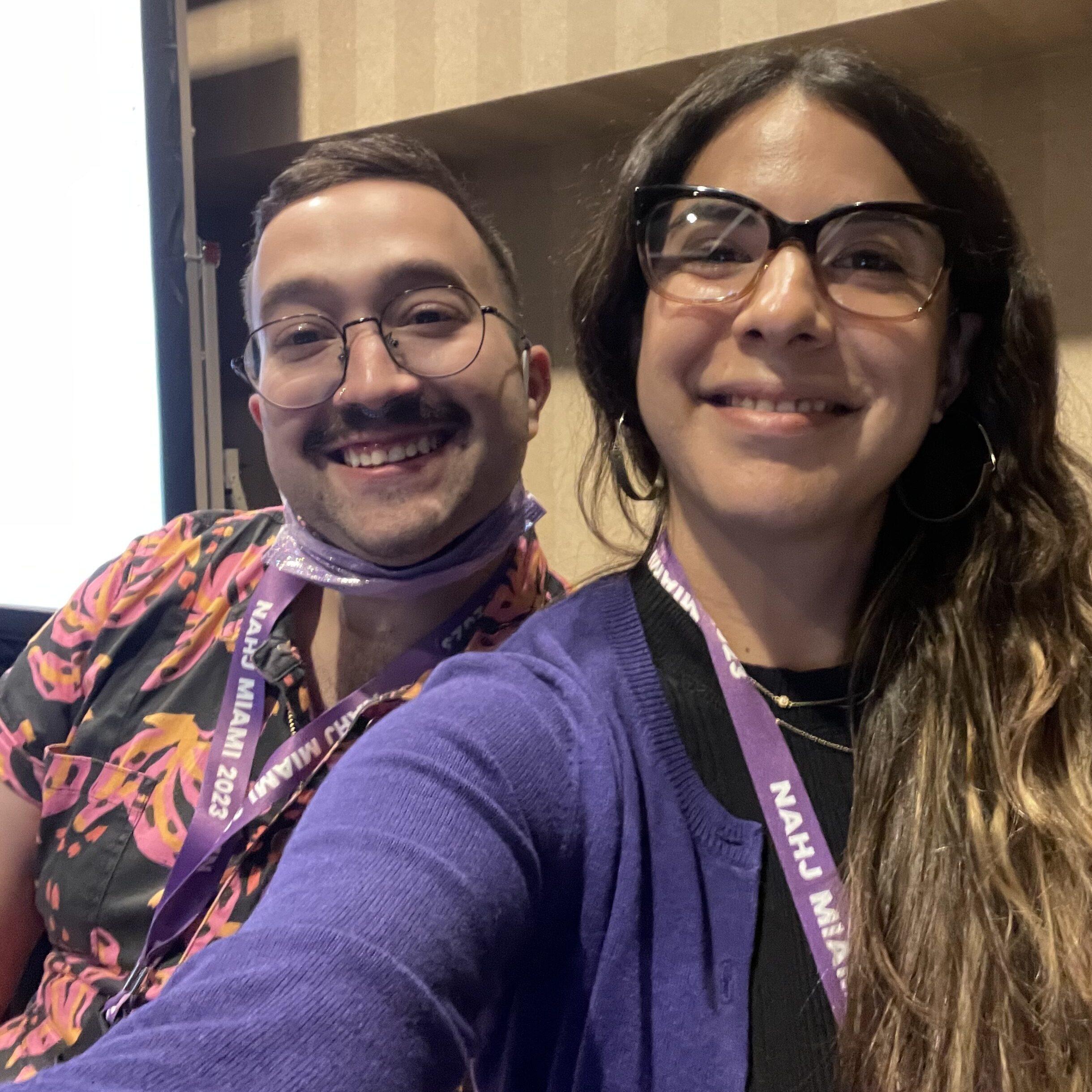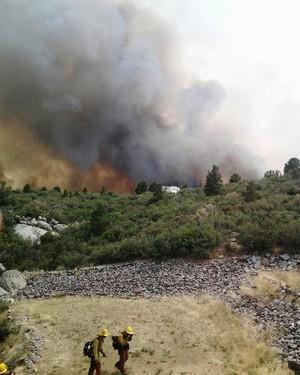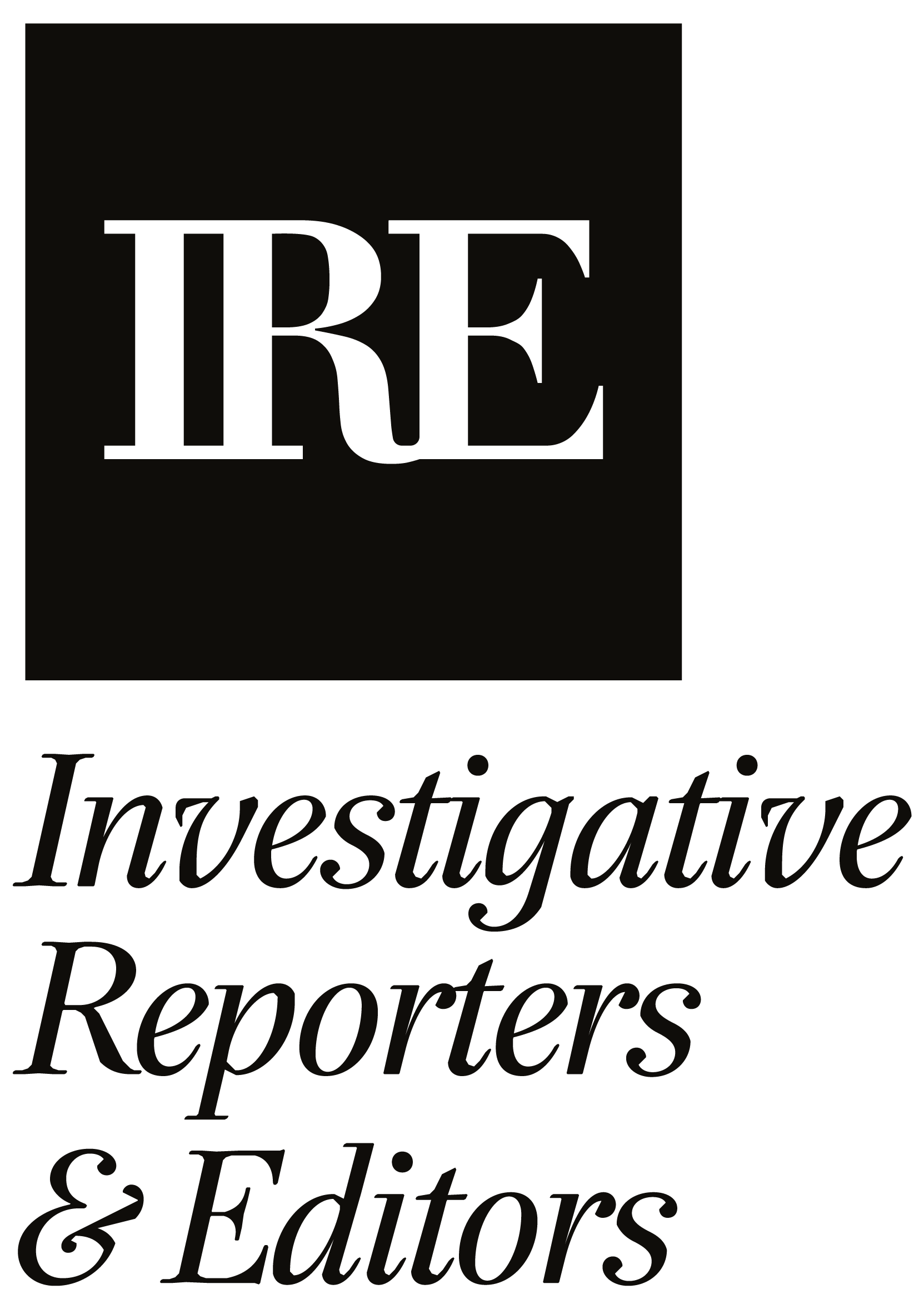If you fill out the "Forgot Password" form but don't get an email to reset your password within 5-10 minutes, please email logistics@ire.org for assistance.
IRE is proud to be one of many journalism associations working to educate, empower and connect journalists across the globe. We believe the field of journalism is stronger when we work together and learn from each other.
So this year, our organization has renewed its focus on exchanging perspectives and expertise with other journalism associations. In addition to our own conferences, bootcamps and training programs, the IRE team has trained at six partner conferences so far in 2023, with six more coming up before the end of the year.
“As much as we love having people come to our events, we know as an organization it's critical that we also get out to other journalism association events to build relationships and exchange ideas and perspectives,” IRE Director of Diversity and Inclusion Francisco Vara-Orta said. “That in turn helps enrich what we do for our members and, we hope, for theirs as well.”
Along with Executive Director Diana Fuentes, Vara-Orta has led IRE’s strategy to engage with a wide range of organizations — with special focus on those that serve journalists of color and other historically marginalized groups.
In June, IRE board member and former training director Mark Walker served as a faculty member and mentor in the Maynard Institute for Journalism’s Maynard 200 Fellowship program in Fort Worth, Texas.


In July, Vara-Orta attended the National Association of Hispanic Journalists conference in Miami with IRE training directors Adam Rhodes and Laura Moscoso. Vara-Orta took part in panels on mental health support for queer colleagues, in partnership with NAHJ’s LGBTQ+ task force, and education coverage, in partnership with the Education Writers Association (EWA). Rhodes and Moscoso presented five training sessions in English and Spanish on topics such as FOIA requests, accountability interviews and hands-on data journalism training.
The following week, Fuentes attended the Asian American Journalists Association conference in Washington, D.C, conducting a training session on accessing public data.
In August, Fuentes will attend the NABJ Convention in Birmingham, Alabama, with Walker, who will present two sessions on investigative and data journalism. Vara-Orta will travel to Winnipeg, Canada, to take part in a panel on freedom of information requests at NAJA’s National Native Media Conference. Meanwhile, Rhodes will attend NLGJA’s 2023 National Convention in Philadelphia to offer an introduction to investigative reporting and public records.
Our training outreach efforts also extend to organizations that focus on particular beats. Earlier this year, Vara-Orta offered training on source diversity at the EWA conference in Atlanta. IRE Senior Training Director Liz Lucas also presented an introduction to data journalism at the Association of Health Care Journalists conference in St. Louis.
Coming up, Lucas and Fuentes will attend the Global Investigative Journalism Network conference in Gothenburg, Sweden, where Lucas will offer five training sessions on data journalism. Fuentes will also attend the Online News Association conference in Philadelphia and the Society of Professional Journalists convention in Las Vegas, where she will provide FOIA training. And in October, Rhodes will travel to the Military Veterans in Journalism Convention in New York City to offer training on public records and an introduction to investigative reporting.
We attend and train at journalism conferences as budget and staff availability allow, and join forces with partner organizations to present webinars and regional events. But of course, we can’t be everywhere at once.
When we can’t attend events ourselves, we invite our fellow journalism organizations to collaborate with us on panels in their area of expertise at IRE conferences.
At this year’s IRE conference in Orlando, we worked with the Reporters Committee for Freedom of the Press to develop several sessions on public records and media law. We also partnered with the National Center on Disability and Journalism to present a session on developing a disability beat. Both organizations helped organize the panels and sent speakers of their own to the conference. We also collaborated with the Global Investigative Journalism Network on a session highlighting the best international investigations of the year.
More partner programming is in the works for AccessFest, our virtual-by-design conference coming up October 12-14, 2023. We’re working with EWA on two sessions covering disparities and inequities in higher education and k-12 schools. Plus, our friends at Factchequeado will present a session in both English and Spanish examining whether non-English speaking communities in the U.S. are more vulnerable to mis- and disinformation than English speakers. See more expected sessions for AccessFest23.
Connections like these make the journalism community stronger than ever, and help all of us better serve our members and the communities they cover. If you are involved with other journalism organizations and have ideas for collaborations or partnerships with IRE, we’d love to hear from you! Drop us a note at info@ire.org or contact Director of Diversity & Inclusion Francisco Vara-Orta directly at francisco@ire.org.
IRE also offers customized in-person and online training for newsrooms. You can decide which skills your staff needs to sharpen, and we will put together a training schedule to help you reach your goals — from building a watchdog culture and effectively using databases to source diversity and inclusive newsroom practices. Learn more about our custom training or submit a request online.
IRE traveled to Los Angeles, Tucson and Laramie last weekend for a trio of Watchdog Workshops. Attendees shared their tips and ideas on Twitter.
Our Los Angeles workshop at USC featured IRE trainer Jaimi Dowdell, independent journalist Ronald Campbell, Milwaukee Journal Sentinel reporter/assistant editor Ellen Gabler, NBC Bay Area reporter Jenna Susko, and Los Angeles Times legal counsel Jeff Glasser.
— Jillian Beck (@Jillian_Beck) April 11, 2014
— Jaimi Dowdell (@JaimiDowdell) April 11, 2014
— Michael J. Arvizu (@thedjmichaelj) April 11, 2014
— Jillian Beck (@Jillian_Beck) April 11, 2014
— Julie Walmsley 吴志伦 (@JWalmsleyJourno) April 11, 2014
— Mike Reicher (@mreicher) April 11, 2014
— Jaimi Dowdell (@JaimiDowdell) April 11, 2014
— Jillian Beck (@Jillian_Beck) April 11, 2014
— George Stanley (@geostanley) April 11, 2014
— Julie Walmsley 吴志伦 (@JWalmsleyJourno) April 12, 2014
In Tucson we stopped at the University of Arizona School of Journalism. Attendees heard from several speakers including Megan Luther, IRE training director; David Cuillier, national president of the Society of Professional Journalists; and Celeste Gonzalez de Bustamante, an associate professor with extensive experience covering the U.S./Mexico border.
— Marisa Mendelson (@MarisaMendelson) April 12, 2014
— Mariana Dale (@mariana_dale) April 12, 2014
— Hannah Gaber (@HannahSGS) April 12, 2014
— Mariana Dale (@mariana_dale) April 12, 2014
— Celeste Bustamante (@celestegdb) April 14, 2014
— Hannah Gaber (@HannahSGS) April 12, 2014
— Yoohyun Jung (@yoohyun_jung) April 13, 2014
— Mariana Dale (@mariana_dale) April 13, 2014
— Johanna Willett (@JohannaWillett) April 13, 2014
— Hannah Gaber (@HannahSGS) April 12, 2014
— Celeste Bustamante (@celestegdb) April 14, 2014
IRE last week brought its popular Watchdog Workshop series to the CUNY Graduate School of Journalism. Nearly 250 people attended the event, which included two extra tracks focused on financial and data journalism.
The financial sessions focused on tools to investigate stocks and commodities, hedge funds and more, with speakers from Bloomberg, Reuters, the Times and the Journal. The data track included information on visualization, cybersecurity, storytelling and more, with additional speakers from organizations including ESPN, WNYC and more.
Throughout the two-day event, attendees shared quotes, tips and notes on Twitter using #watchdogworkshop.
Walt Bogdanich, an assistant editor for investigations at The New York Times, discussed the art of the investigative interview.
Seeing Walt Bogdanich speak is to me what seeing Kanye in concert is to some people. #journalism #nerdstatus @IRE_NICAR
— Michael Sisak (@cvmikesisak) January 24, 2014
Best @IRE_NICAR #watchdogworkshop today: Walt Bogdanich from the @nytimes. Great tips on investigative interviews at @cunyjschool
— Nelson Oliveira (@olivnelson) January 24, 2014
"As long as you've got somebody on the line, don't let them go." esp. if they want to talk to their lawyer first Walt Bogdanich @IRE_NICAR
— Amber Phillips (@phillipsamberj) January 24, 2014
David Barstow, a senior writer for The New York Times and three-time Pulitzer Prize winner, talked about the investigative reporter’s mindset.
David Barstow, NYT: "Marinate yourself in the material." Read all the documents so you master topic you're investigating #watchdogworkshop
— Amy Friedenberger (@AJFriedenberger) January 24, 2014
Barstow: Give yourself a week to fact check big investigative story. "You want to get to the point where you can sleep." #watchdogworkshop
— Amy Friedenberger (@AJFriedenberger) January 24, 2014
Bloomberg News’ Bob Ivry was one of three panelists to discuss the Wall Street beat.
"FOIA w/o attitude is just a bunch of papers. Attitude w/o FOIA is a rant." Bob Ivry @IRE_NICAR workshop. True even beyond FOIA, of course.
— @itsjina (@itsjina) January 24, 2014
.@bobivry on finding stories in graphs: "If I can't ski it, it's a story" #watchdogworkshop
— Stan Alcorn (@stan_alcorn) January 24, 2014
Want even more? Lam Thuy Vo and Joanna Kao, of Al Jazeera America, created a public Google Doc to share their detailed notes from the sessions.
Notes from the @IRE_NICAR Watchdog Workshops — great data resources and behind-the-scenes info on investigations: http://t.co/KKOQd8o1re
— Lam Thuy Vo (@lamthuyvo) January 24, 2014
We’re in the process of uploading workshop tipsheets, presentations and audio files. Speakers can send handouts to tipsheets@ire.org.
 Last week IRE's Jaimi Dowdell and Liz Lucas led a four-day boot camp in data analysis at Temple University's Center for Public Interest Journalism.
Last week IRE's Jaimi Dowdell and Liz Lucas led a four-day boot camp in data analysis at Temple University's Center for Public Interest Journalism.
The Center for Public Interest Journalism sponsored the training, lowering the cost from $800 to $200. Participants learned to clean and analyze data using Microsoft Excel and Structured Query Language with Microsoft Access. They also learned how to find data, craft records requests and negotiate for electronic information.
Participants included journalists from the following organizations:
- The Center for Public Integrity
- CNNMoney
- Fort Worth Weekly
- Metrowest Daily News
- Philadelphia City Paper
- Philadelphia Weekly
- Temple University
- The Buffalo News
- The Victoria Advocate
- VTDigger.org
- The WCAU-Philadelphia
- Wilmington News Journal
By Mugambi Mutegi
Editor's note: in July, IRE hosted the 2013 class of Alfred Friendly Fellows for training in training in computer-assisted and investigative reporting, covering Excel spreadsheets and more. One of the fellows, Mugambi Mutegi, wrote about his experience using Excel for the Alfred Friendly Press Partners, republished below.
In the short time I have been alive, I had not until recently come across anybody who, upon using MS Excel for the first time, instantly fell in love with the program.
I’m sure such people exist, but I can hazard that they do not exceed six – worldwide.
For me, the most appealing function about Excel was the ‘X’ button at the right hand corner of an open window.
Just point your mouse at the button, click and, voila, the universe regains some normalcy.
No formulas required.
I managed to steer clear of Excel and its evil cells and columns for a long time, until I was employed at Business Daily.
There was no escape this time, I thought. I just had to get used to it — to process data and plot graphs, among other uses. —
I, sadly and — retrospectively – regrettably, had never taken time to learn any new stuff over and above what was required to (barely) survive.
PS: I happen to love interesting things in life so spare me that look.
Therefore, when I skimmed through the AFPP mid-term seminar program, I was far from excited to find the word ‘’spreadsheets’’ listed therein.
I was finally getting to meet two of the six people who love Excel.
We flew to Columbia, Mo., and when the appointed day and hour arrived, Mark Horvit introduced himself and his colleague, Jaimi Dowdell.
“Two out of six? In the same room? At the same time?” That was me mentally wrestling with the concept of probabilities.
Mark is the executive director for Investigative Reporters and Editors, where Jaimi has been a training director since 2008.
The two laid out a tag-team training outline for us, and when they were done Jaimi took the floor.
She taught us about fusion tables, using social network analysis to find connections and how to find and download data on the Internet.
As I stated earlier I am for cool stuff, and whatever Jaimi was teaching was indeed 50 shades of cool.
Like a thirsty dog, I lapped it all up. Inwardly, I dreaded the moment when the lesson would be abruptly ended by the mention of “spreadsheets”!
Jaimi seemed just as passionate about what she was teaching as she was lively.
Not that the latter mattered to me, I was processing a ton of new stuff every time she spoke. Dozing off was not an option.
When Mark came on, I was relieved that he matched (if not surpassed) Jaimi’s energy. Remember, at this point, I was already biased against one of his topics and the least he could do was to bore me in the most energetic way possible.
Boy, was I in for a shock!
Allow me to digress in order to infuse a little bit of context at this point.
As it so happens, I am the Business Daily reporter who, more often than not, is assigned to cover the release of secondary and primary school national examinations.
This means that twice a year, I have to sift through hundreds of numbers and names, trying to sniff out a story other than what the Education Minister presents.
I will not go into the details of how I accomplished this in years past, but let’s just say, at the end of those days, I was a spent soul in desperate need of a stiff drink.
This is not the only instance where I have to deal with a lot of data.
Let Mark re-enter the stage.
Here he was effortlessly exhibiting how to use Computer Assisted Reporting (CAR).
In no time, I was grouping and crunching random data and offering suggestions on stories that could be pursued.
I felt happy that I had learned something invaluable, but I also ended up feeling like a refined dummy.
I have always prided myself on being a technologically savvy individual.
Therefore, I felt terrible that I had allowed my prejudices toward Excel to prevent me from exploring its versatility.
I could not help but wonder how much more relaxed the days I handled national examination results would have been had I taken the time to study Excel just a bit more.
I learned a lot during the midterm seminar, but personally, Excel and the neat tricks and tools such as using the scraper and getting data from “locked” documents stood out for me.
A friend just read this blog and told me, “I am glad you have seen the light. Excel is the very fiber that runs this world.”
I now know of four Excel lovers – including myself, a new recruit.
Where are the other two?
In March, LaCrosse Tribune reporter Chris Hubbuch attended an IRE training event in Wisconsin, where introductions to Excel and data-driven journalism were on the agenda. Since then, he’s produced data-driven stories on foreclosures, property values, crime and waste. He even revelaed that the LaCrosse mayor's pet license was out of date. Using federal data, the LaCrosse Tribune turned a story on deadline showing disparities in hospital charges, complete with an interactive data visualization. Here’s a look at some of the LaCrosse Tribune stories that IRE training helped make possible:

Editor's Note: As the Yarnell Hill Fire continues to blaze, mourning begins for the lives of 19 firefighters lost in the battle. Reporters are beginning to dig into why this disaster happened. Nate Carlisle, justice editor at The Salt Lake Tribune, has covered wildfires since 2005 and completed a weeklong wildland firefighter certification course. He offers some advice and suggests questions for those wanting to investigate this and other fire tragedies.
Standard Firefighting Orders, courtesy National Wildfire Coordinating Group Incident Response Pocket Guide, PMS 461, NFES 1077, January 2010. PDF found here: http://bit.ly/MoPDvR
Live wildfire map Powered by Esri
IRE will be offering a computer-assisted reporting boot camp at Temple University in Philadelphia, Penn., August 19-22. During these four days attendees will be introduced to analyzing data for stories with spreadsheets and database managers. In addition, they'll learn ways to find data, craft open records requests and negotiate for electronic information.
Because of the generosity from the Center for Public Interest Journalism we're able to offer a reduced flat rate of $200 to attend this hands-on training. Register today as seats are limited.
Experienced IRE trainers will teach you how to summarize data using Microsoft Excel and query information using Structured Query Language in Microsoft Access.
More information including hotels and a sample schedule will be posted soon. See the Boot Camps page for insturctions on how to register and information on other workshops and boot camps coming near you. For questions please contact jaimi@ire.org.

The deadline has been extended to April 14 for an all-expenses paid reporting workshop on covering agribusiness from The Midwest Center for Investigative Reporting and Investigative Reporters and Editors, held May 30 to June 2 in Champaign, Ill. Applications must be received by midnight Central Time.
The workshop will bring together educators, reporters and editors from small-to-midsize newsrooms to hear and learn how to take an in-depth look at the issues surrounding agribusiness.
Why investigate agribusiness? Corporate agribusiness is growing each year. Agribusiness produces food, feed and fuel. Large firms employ tens of thousands of people and their sales net billions of dollars.
The issues involved in are many and diverse, including federal subsidies and crop insurance, farm worker conditions and immigration, antibiotics and food safety, pesticides and genetically-modified seed patents, to name a few.
Last week on the blog, we took a look at some of the investigations that have been done into agribusiness. Here's that list:
Anonymous tipsters often prompt Monsanto farm investigations | St. Louis Beacon, 2013
William Freivogel of the Midwest Center for Investigative Reporting reports on Monsanto’s enforcement of its seed patents, and how the company has set up an anonymous tip line to find farmers who are infringing on its patents.
Beef’s Raw Edges |The Kansas City Star, 2012
Veteran reporter Mike McGraw spent months on this story, uncovering that “The industry increasingly relies on a mechanical tenderization process, increasing E. coli risks. Meanwhile, doctors and USDA say antibiotic overuse is leading to resistant bacteria in humans. And with consumption down, beef is fighting back with efforts to influence U.S. dietary guidelines.”
Got a suggestion?
If you have a story we should add to this list, let us know and it'll join our resource center! Email it to web@ire.org.
As Common as Dirt | Food and Environment Reporting Network/American Prospect, 2012
Tracie McMillan examines wage theft -- a practice rampant in agriculture unlike any other industry, and how the farm labor contractor system prevents oversight and robs farm workers of protection: “Farm-labor contractors give American produce growers what companies like China’s Foxconn offer to Apple: a way to outsource a costly and complicated part of the business, often saving money in the process and creating a firewall between the brand and the working conditions under which its products are made.”
What the USDA Doesn't Want You to Know About Antibiotics and Factory Farms | Mother Jones, 2011
Food and agriculture blogger Tom Philpott reports that the USDA scrubbed from its website research on antibiotics in food production and the rise of resistant bacteria, as well as ordered the researcher not to speak to the media. The report stated that “Use and misuse of antimicrobial drugs in food animal production and human medicine is the main factor accelerating antimicrobial resistance,” a fact the industry resists.
Agriculture is nation’s biggest polluter but usually goes unpunished | InvestigateWest, 2012
Robert McClure investigates hole in the Clean Water Act that allows agriculture to continue polluting: Forty years after Congress passed the Clean Water Act, the Lemire case highlights one of the biggest failings of this bedrock environmental law: farms are exempted from federal water-pollution regulation.”
In Sugar Price Supports, Sour Tastes for Consumers | Florida Center for Investigative Reporting, 2012
Amy Green reports that Americans pay $2 billion in increased food prices every year as a result of the inflated price of sugar. “There has been a lot of tension between environmentalists and sugar growers in South Florida,” she has said of her reporting. “But we don’t realize the way food policy has affected all Americans.”
Our Dwindling Food Variety | National Geographic Magazine, 2011
John Tomanio visualizes the thousands of heirloom varieties that have been lost -- 93 percent for the 66 crops included in a comparison of seed varieties sold by commercial U.S. seed houses in 1903 with those in the U.S. National Seed Storage Laboratory in 1983
Monsanto’s Harvest of Fear | Vanity Fair, 2008
Reporting team Donald Barlett and James Steele investigate Monsanto’s strong-arm tactics against small farmers: “Monsanto already dominates America’s food chain with its genetically modified seeds. Now it has targeted milk production. Just as frightening as the corporation’s tactics–ruthless legal battles against small farmers–is its decades-long history of toxic contamination”
Harvesting Cash | The Washington Post, 2006
Sarah Cohen, Dan Morgan and Gilbert Gaul spent more than a year examining farm subsidies, finding more than $15 billion in “wasteful, unnecessary and redundant spending.”
Fraud on the Farm | NPR, 2005
In a series of radio reports, John Burnett explains how “federal crop insurance was created in the dust bowl days of the 1930s to help farmers survive the ravages of nature. But changes in the program have created a new type of farmer: one who farms only for the insurance money.

Monday is the last day to register for an all-expenses paid reporting workshop on covering agribusiness from The Midwest Center for Investigative Reporting and Investigative Reporters and Editors, held May 30 to June 2 in Champaign, Ill. The workshop will bring together educators, reporters and editors from small-to-midsize newsrooms to hear and learn how to take an in-depth look at the issues surrounding agribusiness.
Why investigate agribusiness? Corporate agribusiness is growing each year. Agribusiness produces food, feed and fuel. Large firms employ tens of thousands of people and their sales net billions of dollars.
The issues involved in are many and diverse, including federal subsidies and crop insurance, farm worker conditions and immigration, antibiotics and food safety, pesticides and genetically-modified seed patents, to name a few. Curious what can and has been done? IRE has put together a few examples of investigations into agribusiness:
Anonymous tipsters often prompt Monsanto farm investigations | St. Louis Beacon, 2013
William Freivogel of the Midwest Center for Investigative Reporting reports on Monsanto’s enforcement of its seed patents, and how the company has set up an anonymous tip line to find farmers who are infringing on its patents.
Beef’s Raw Edges |The Kansas City Star, 2012
Veteran reporter Mike McGraw spent months on this story, uncovering that “The industry increasingly relies on a mechanical tenderization process, increasing E. coli risks. Meanwhile, doctors and USDA say antibiotic overuse is leading to resistant bacteria in humans. And with consumption down, beef is fighting back with efforts to influence U.S. dietary guidelines.”
Got a suggestion?
If you have a story we should add to this list, let us know and it'll join our resource center! Email it to web@ire.org.
As Common as Dirt | Food and Environment Reporting Network/American Prospect, 2012
Tracie McMillan examines wage theft -- a practice rampant in agriculture unlike any other industry, and how the farm labor contractor system prevents oversight and robs farm workers of protection: “Farm-labor contractors give American produce growers what companies like China’s Foxconn offer to Apple: a way to outsource a costly and complicated part of the business, often saving money in the process and creating a firewall between the brand and the working conditions under which its products are made.”
What the USDA Doesn't Want You to Know About Antibiotics and Factory Farms | Mother Jones, 2011
Food and agriculture blogger Tom Philpott reports that the USDA scrubbed from its website research on antibiotics in food production and the rise of resistant bacteria, as well as ordered the researcher not to speak to the media. The report stated that “Use and misuse of antimicrobial drugs in food animal production and human medicine is the main factor accelerating antimicrobial resistance,” a fact the industry resists.
Agriculture is nation’s biggest polluter but usually goes unpunished | InvestigateWest, 2012
Robert McClure investigates hole in the Clean Water Act that allows agriculture to continue polluting: Forty years after Congress passed the Clean Water Act, the Lemire case highlights one of the biggest failings of this bedrock environmental law: farms are exempted from federal water-pollution regulation.”
In Sugar Price Supports, Sour Tastes for Consumers | Florida Center for Investigative Reporting, 2012
Amy Green reports that Americans pay $2 billion in increased food prices every year as a result of the inflated price of sugar. “There has been a lot of tension between environmentalists and sugar growers in South Florida,” she has said of her reporting. “But we don’t realize the way food policy has affected all Americans.”
Our Dwindling Food Variety | National Geographic Magazine, 2011
John Tomanio visualizes the thousands of heirloom varieties that have been lost -- 93 percent for the 66 crops included in a comparison of seed varieties sold by commercial U.S. seed houses in 1903 with those in the U.S. National Seed Storage Laboratory in 1983
Monsanto’s Harvest of Fear | Vanity Fair, 2008
Reporting team Donald Barlett and James Steele investigate Monsanto’s strong-arm tactics against small farmers: “Monsanto already dominates America’s food chain with its genetically modified seeds. Now it has targeted milk production. Just as frightening as the corporation’s tactics–ruthless legal battles against small farmers–is its decades-long history of toxic contamination”
Harvesting Cash | The Washington Post, 2006
Sarah Cohen, Dan Morgan and Gilbert Gaul spent more than a year examining farm subsidies, finding more than $15 billion in “wasteful, unnecessary and redundant spending.”
Fraud on the Farm | NPR, 2005
In a series of radio reports, John Burnett explains how “federal crop insurance was created in the dust bowl days of the 1930s to help farmers survive the ravages of nature. But changes in the program have created a new type of farmer: one who farms only for the insurance money.

Looks like you haven't made a choice yet.